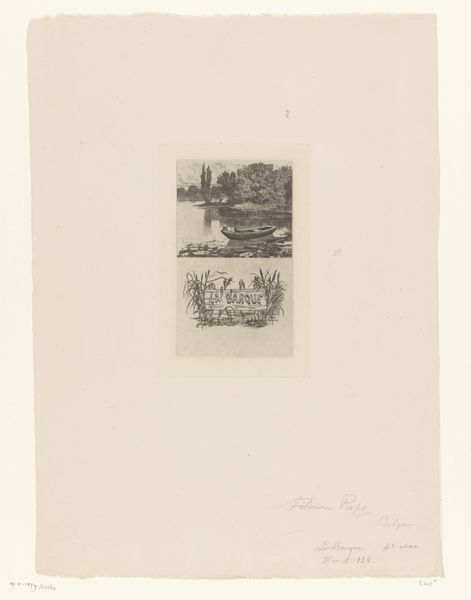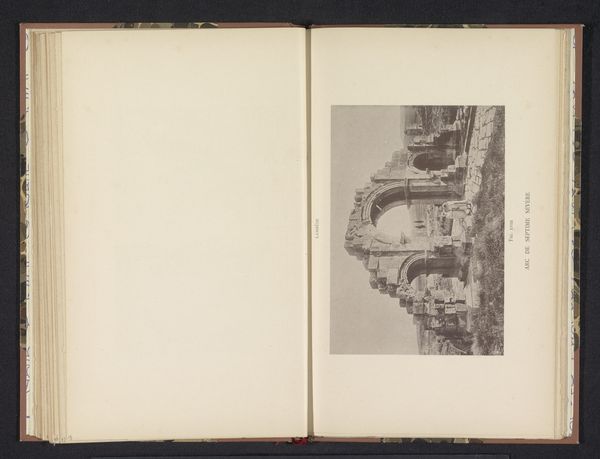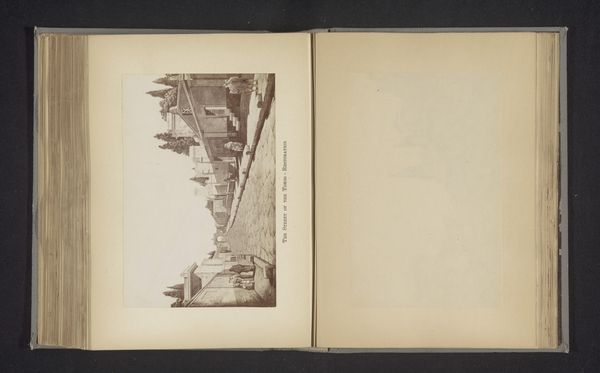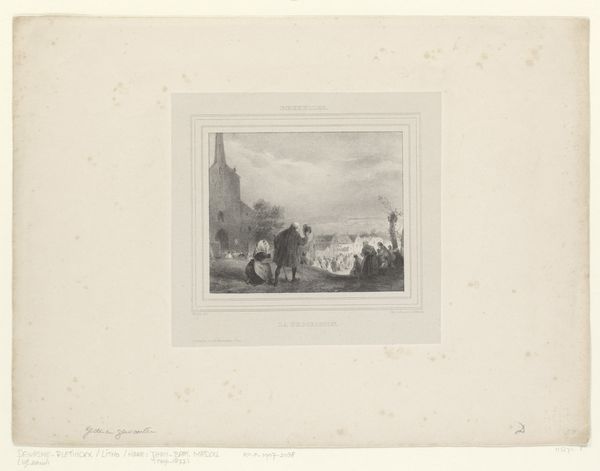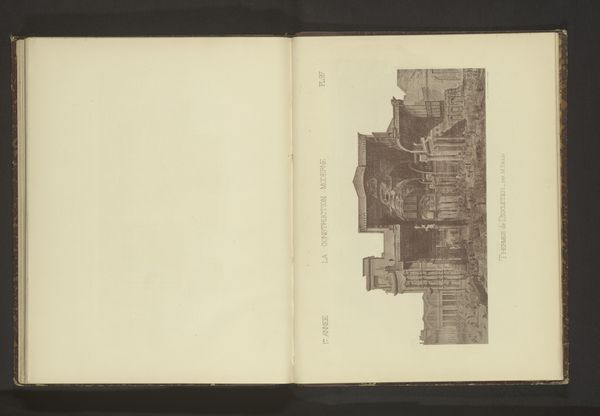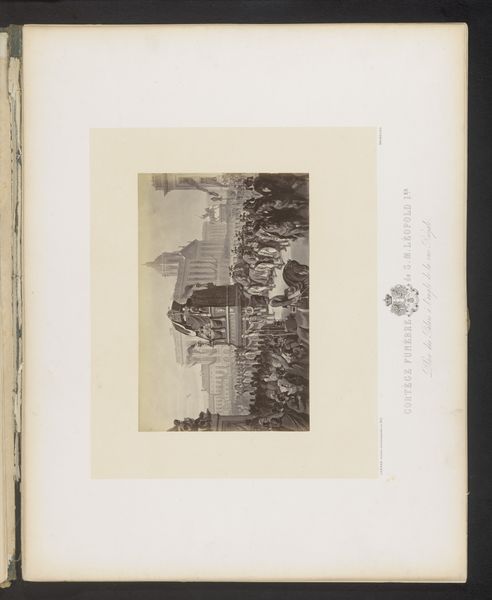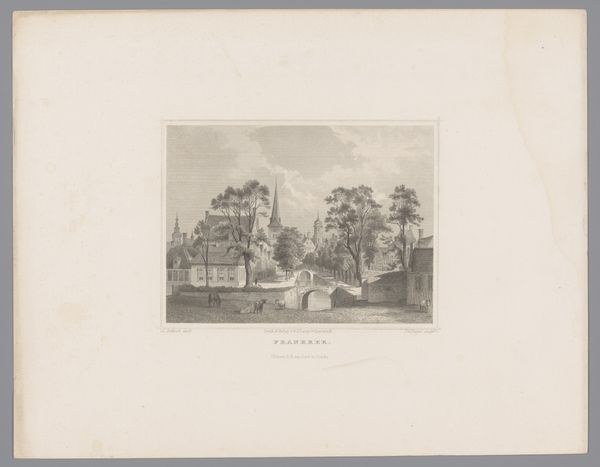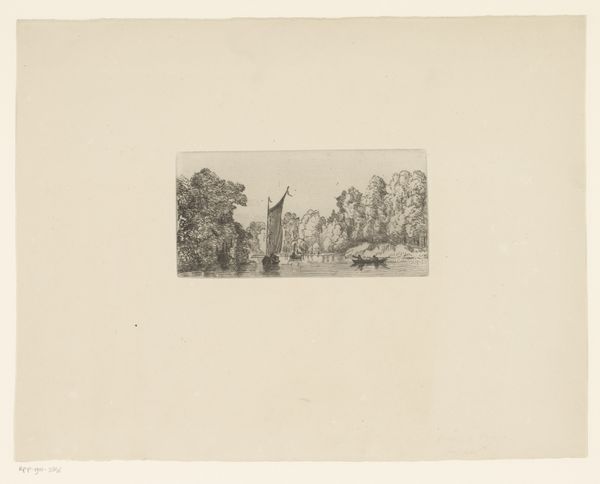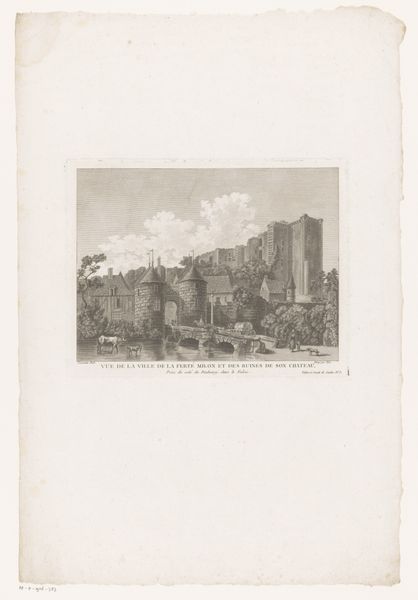
drawing, print, paper, graphite
#
drawing
# print
#
paper
#
graphite
#
cityscape
#
realism
Dimensions: height 105 mm, width 100 mm
Copyright: Rijks Museum: Open Domain
Curator: Welcome. We’re standing before Gottfried Lorenz’s “Novemberwellen,” a graphite drawing and print on paper created sometime between 1870 and 1928. Editor: It has such a somber atmosphere, doesn't it? The monochromatic tones, the almost hazy quality... it evokes a real sense of urban melancholy. Curator: Indeed. The tonal range, though limited, creates a delicate balance between light and shadow. Observe how the composition guides the eye toward the vanishing point, reinforcing a perspectival clarity despite the muted palette. Editor: I'm struck by the density of detail in rendering of the architecture. The buildings aren’t simply sketched— they possess this intricate structure that would have been so carefully inscribed by the artist’s hand. You think about the amount of labor needed… Curator: Absolutely. Consider the urban context, potentially Vienna during the late 19th or early 20th century. The drawing method mirrors the burgeoning industrialization of the printing trades themselves. We witness realism as both the artistic and technical modus operandi. Editor: And the city subject has obviously felt the impact of these "November Waves". Note the reflections suggesting wet pavement. It would be a very tactile process—wiping the plate with a cloth and creating variations within a uniform printing. Curator: Precisely! And furthermore, there’s a semiotic language present. Rain, buildings, transportation. Everything conveys a subtle, almost concealed commentary on the material conditions of the city dweller's existence. Editor: Right. Thinking about the paper material itself too… the affordability of this artwork allowed wider accessibility, reaching more of a growing public, a burgeoning art consumer base. Curator: An intriguing piece. The drawing masterfully portrays and interprets modernity, rendering visible those urban infrastructures, those processes shaping lives that tend to otherwise get overlooked. Editor: And ultimately, Lorenz offers us a look at how weather, technique, and industrialization all shape the artistic image we consume. A quiet, thoughtful urban narrative, really.
Comments
No comments
Be the first to comment and join the conversation on the ultimate creative platform.
